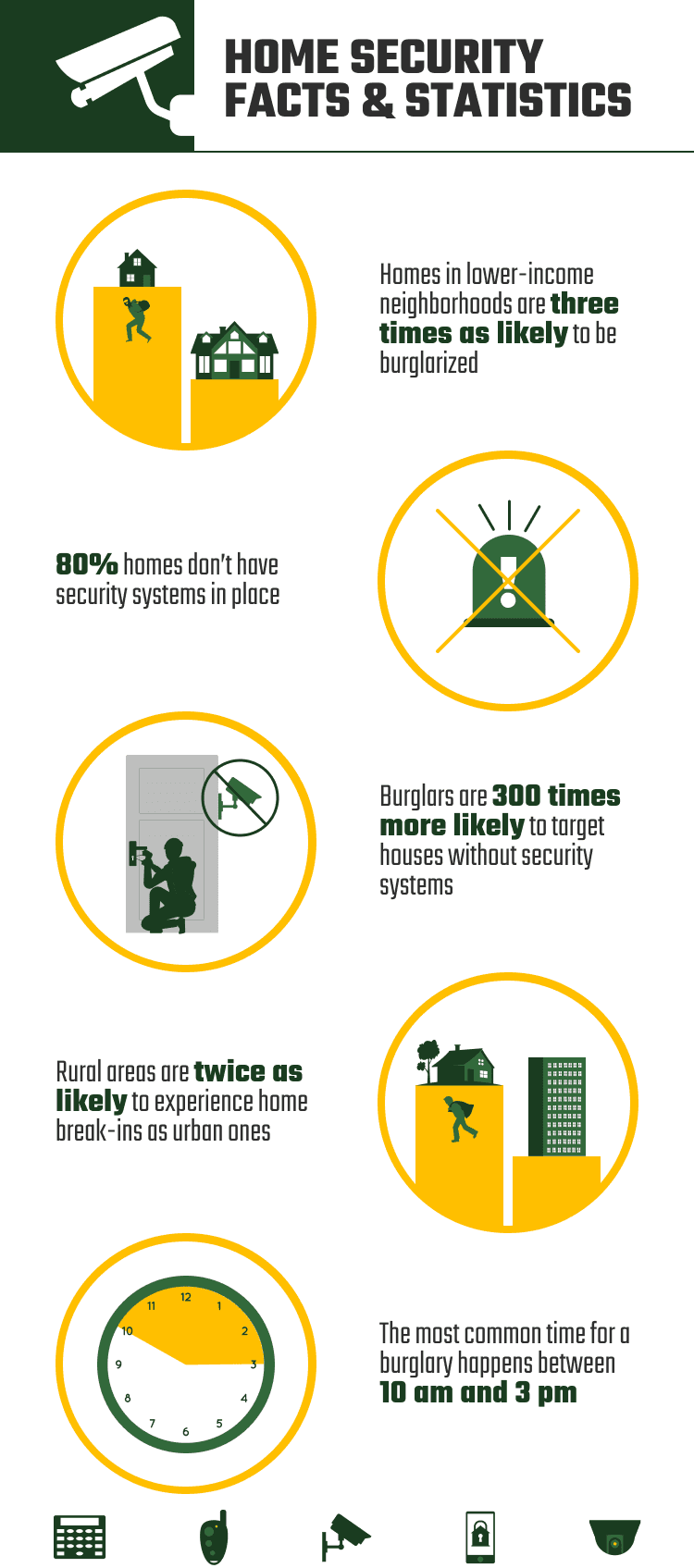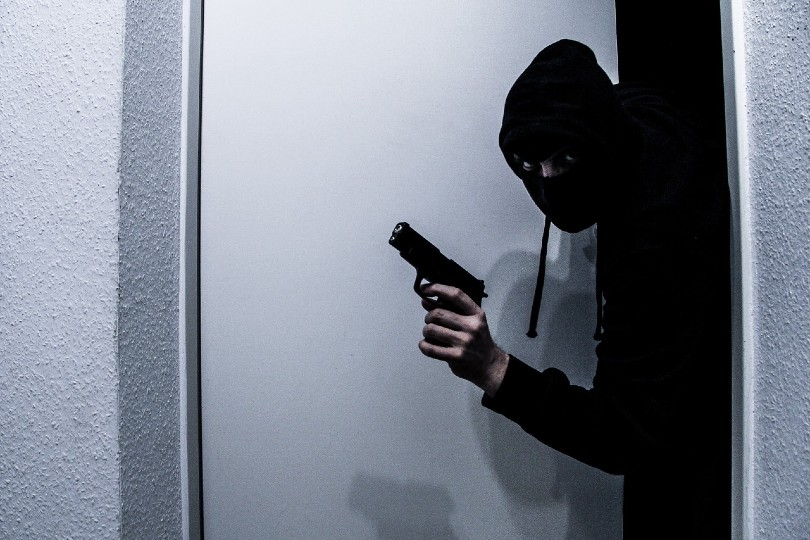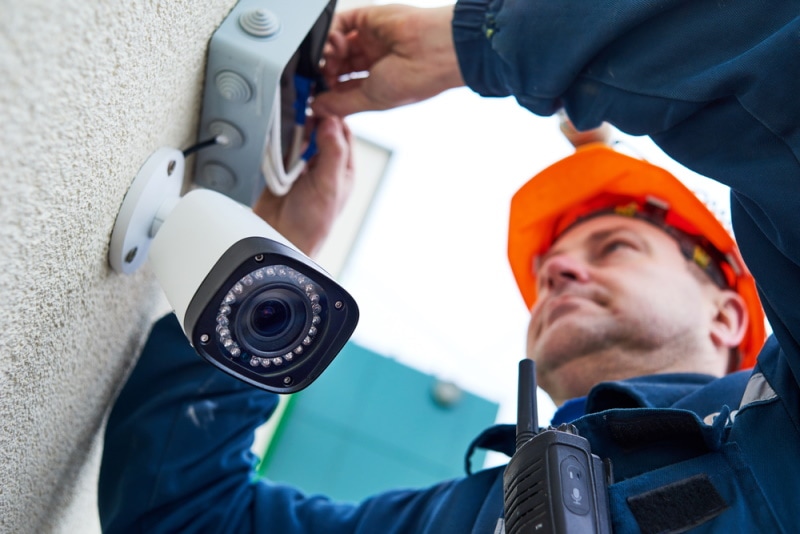10 Home Security Statistics (2025 Update)
-
Pete Ortiz
- Last updated:

Note: This article’s statistics come from third-party sources and do not represent the opinions of this website.
Home security statistics paint a picture of why a home security system is one of the best investments you can make. Home break-ins and burglaries are on the rise, particularly in urban areas, and it is important to be aware of the risks. This update outlines 10 key home security statistics that everyone should know.
Click below to jump ahead:
- General Home Security Statistics and Facts
- Statistics for Homes With Security Systems
- Home Security Statistics
The 10 Home Security Statistics
- Most thieves can break into your house in under a minute.
- Homes in lower-income neighborhoods are three times as likely to be burglarized.
- A burglary happens every 25.7 seconds.
- 4 out of 5 homes don’t have security systems in place.
- Burglars are 300 times more likely to target houses without security systems.
- Approximately 56% of home security breaches are in single-parent homes.
- 95% of all home break-ins are done by forceful entry.
- During the average break-in, more than $2,500 worth of goods are stolen.
- Rural areas are twice as likely to experience home break-ins as urban ones.
- The most common time for a burglary happens between 10 AM and 3 PM.

 General Home Security Statistics and Facts
General Home Security Statistics and Facts
1. Most thieves can break into your house in under a minute.
(API Alarms)
It typically takes a burglar no more than 60 seconds to break into a home, as they will target backdoors to avoid detection. After gaining access, it generally only takes 8 to 12 minutes for them to make their way through the house and disappear with what they have taken.
With such alarming figures, it’s important to increase your home’s security and make it harder for intruders to get in. While nothing is foolproof, there are several measures you can take to deter criminals from entering your home and making off with your possessions. Or, at the very least, delay their entry long enough for law enforcement to arrive.

2. Homes in lower-income neighborhoods are three times as likely to be burglarized.
(U.S. Bureau of Justice)
Sadly, the statistics show that burglary rates in low-income areas are much higher than those in affluent neighborhoods. Low-income households can be seen as easy targets for criminals who are looking for an opportunity to score some quick cash or valuable items without being detected.
It is, therefore, important to be aware of your surroundings and take extra precautions to secure your home. Installing an alarm system or CCTV cameras can help deter potential burglars, as well as investing in a quality lock for all doors and windows.
3. A burglary happens every 25.7 seconds.
(Bankrate.com)
The fact that burglaries occur so often is alarming, to say the least. If you break this statistic down, this means there are over 3,000 burglaries per day. It is likely that you know someone who has had their home burgled.
This statistic does not look at the different levels of burglary that occur daily, such as burglary that involves the victim getting harmed or when something is taken from a yard outside the physical home.

Statistics for Homes With Security Systems
4. Four out of five homes don’t have security systems in place.
(Alarms.org)
Unfortunately, most people don’t take the necessary steps to protect their homes. Around 80% of homes lack any kind of security system or measure in place to deter intruders and burglars.
This makes it much easier for criminals to gain access to your property without being noticed. Installing an alarm system is a great way to deter criminals, as the sound of a loud alarm will alert you and your neighbors in case someone tries to break in.
In addition, motion-sensor lights are great for keeping intruders away from your property while also providing extra security during the night. These measures can help make it much more difficult for burglars to enter your home and make off with your possessions.
5. Burglars are 300 times more likely to target houses without security systems.
(Alarms.org)
Burglars tend to go after homes that don’t have any type of security system or measures in place, as it is much easier for them to gain entry unnoticed.
Statistics show that homes without security systems are 300 times more likely to be the target of a burglary than those that do have one in place.
Coupled with the fact that 80% of homes don’t have any type of security system, this means that a burglary is much more likely to occur in an unprotected house than in one that has taken the necessary steps to secure its property.
Therefore, it is important to invest in a quality alarm system and other measures to ensure your home stays protected from intruders.

6. Approximately 56% of home security breaches are in single-parent homes.
(U.S. Bureau of Justice)
Single-parent households are particularly vulnerable when it comes to home security breaches.
Statistics show that around 56% of all home security breaches involve single-parent homes, making these individuals prime targets for criminals looking to take advantage of their vulnerability.
This is a shocking statistic, as single-parent households often have limited financial resources and may not be able to afford the necessary security systems or measures that would help protect their property from burglars.
If at all possible, single-parent households should strive to invest in a quality home security system that includes motion-sensor lights, cameras, and an alarm system.
These measures can help protect these vulnerable households from potential intruders who may be looking to steal their possessions or cash.
Home Security Statistics
7. 95% of all home break-ins are done by forceful entry.
(Alarms.org)
When it comes to home break-ins, statistics show that 95% of them are done by forceful entry. This means that criminals are using physical force to gain access to the property, either by breaking windows or doors or picking locks.
Both homeowners and renters alike should consider investing in quality door and window locks that cannot be easily forced open by an intruder. Window bars can also make it much more difficult for criminals to break into a property.
While this is an added expense, it’s likely to be much cheaper than the cost of replacing valuable goods that are taken during a break-in, as you’ll discover from the next statistic.

8. During the average break-in, more than $2,500 worth of goods are stolen.
(FBI)
When you factor in what’s stolen along with any damages that occur during a break-in, the average burglary carries with it a hefty cost.
Statistics show that more than $2,500 worth of goods are stolen during the average break-in, meaning that burglars can often make off with expensive electronics and other valuable items in a matter of minutes.
According to the FBI, the figure is closer to $2,661 per break-in—a hefty sum to replace if you don’t have insurance coverage. Homeowners and renters can avoid or at least reduce the financial damage of burglary by investing in robust security measures and making sure all their possessions are covered by insurance.
9. Rural areas are twice as likely to experience home break-ins as urban ones.
(USDA)
Contrary to popular belief, it is actually rural areas that are more likely to suffer from home break-ins and burglaries than their urban counterparts.
Statistics show that rural areas have a higher rate of burglary—almost twice as high as urban areas—due to the fact that there is often less of a police presence in these areas, and criminals may believe they can get away with it more easily.
For this reason, homeowners and renters living in rural areas should be extra vigilant when it comes to home security measures.

10. The most common time for a burglary happens between 10 AM and 3 PM.
(The Zebra)
Surprisingly, most burglaries occur during the day. Many people imagine that home invasions happen in the dead of night when you are asleep. However, between the hours of 10 AM and 3 PM are when most people are at work, running errands, or getting their children from school. This leaves the house unguarded.
Frequently Asked Questions
How can home security be improved?
Home security can be improved by installing a modern alarm system that is connected to your smartphone, as well as deadbolts and other physical barriers. You should also consider adding motion-sensor lights, window locks, and cameras around the perimeter of your home.
Lastly, it’s important to establish emergency protocols with family members or roommates so that everyone knows what to do in the event of a break-in or other emergency.
What are the benefits of home security systems?

The main benefit of having a home security system is that it can help deter intruders and alert you if an intruder does try to enter your home. An alarm system can also alert local law enforcement so that they can be on their way to help you even before you’re aware of the situation.
Additionally, having a home security system can provide peace of mind knowing that your home is monitored and protected at all times.
What are the most common risks associated with home security systems?
The biggest issue is false alarms. If your system produces false alarms, it can waste time and resources from the police if they are dispatched to investigate a non-existent threat.
What’s more, some criminals may be aware of certain home security systems, so having one in place may not always deter them from breaking in. However, false alarms and the possibility of a break-in still happening are small risks compared to the benefits.
What are some tips for choosing a home security system?
When selecting a home security system, consider factors like coverage area and how easy it is to use. You should also think about hiring professionals who can install the system correctly and provide training on how to operate the system.
Make sure that the system is compatible with any other smart home devices you might have in your home. Also, try to look for security systems that come with long warranties so that you can be sure the equipment is well-maintained.
Conclusion
Home security is an important issue for homeowners and renters alike. It’s now more important than ever to be aware of the risks associated with home break-ins, as well as the steps you can take to protect your home.
From installing a modern alarm system to adding physical barriers like deadbolts, there are many ways you can improve your home security. With the proper approach, you can help lower the risk of a break-in and ensure the safety of your home.
- See Also: Does Renters Insurance Cover Moving?
Featured Image Credit By: RightFramePhotoVideo, Shutterstock
Contents


 General Home Security Statistics and Facts
General Home Security Statistics and Facts